The newspaper Novyny Horodnianshchyny became known in Ukraine thanks to an unexpected initiative: having survived the occupation of the northern Chernihiv region, three local newspapers began publishing a single edition under three logos. Now, with the support of donor organizations, Novyny Horodnianshchyny has been able to resume its independent publication.
“Our community is located on the border with two aggressors at once: russia and belarus,” Svitlana Tomash, editor-in-chief of the newspaper, told the NUJU. “For centuries, there have been close family ties here. We can say that we used to visit each other abroad on foot. And although there were rumors that a full-scale russian aggression was possible, there were few people in our area who believed it,” Svitlana Tomash begins her story, “But everything changed on February 24, when we heard loud explosions at 5 a.m… Soon the town was under the rule of the invaders.
On the second day of the occupation, the russians came to break down the doors of the district administration, where the editorial office of Novyny Horodnianshchyny rented an office. Then the newspaper evacuated all their binders, which were a historical treasure and existed in a single copy.
“From the first month of the massive russian invasion, we stopped our official activities because it was impossible to publish the newspaper under occupation,” says the editor. “In the conditions when the post office and printing house were not working, it was possible to post materials only on my Facebook page, which I did.”
 The russians were shooting at the towers that provided mobile communications. But there were a few points outside the city where you could catch the network. Svitlana learned how to charge her gadget in the morning, get information during the day about where bread and medicine would be given, and write about it on Facebook. They also published video messages from the mayor of the town. In this way, they tried to counteract panic among the population, as the occupiers tried to persuade people to cooperate. They mostly bribed people with food, but the residents of the Horodnia community refused to accept it on principle.
After the liberation of the Chernihiv region in early April 2022, Novyny Horodnianshchyny began to think about the possibility of publishing the newspaper again.
“Before the war, all our income came from subscriptions and advertising. It is clear that during the three months of downtime we lost all our income and did not receive a single penny,” says Svitlana Vasylivna. “When the Chernihiv printing house resumed operations, the prices of paper and printing immediately skyrocketed. It became clear that there was no financial opportunity to publish a separate newspaper.”
In difficult conditions, when ordinary life in the Chernihiv region, destroyed by the occupiers, has just begun to recover, three former district newspapers (the Koryukiv-based Mayak, the Mena-based Nashe Slovo, and the Horodnia-based Novyny Horodnianshchyny) decided to join forces to resume publishing.
“We published in this mode in May and August. It was a 12-page newspaper, first in black and white, and then in color,” says Svitlana Tomash. “During the time that the Novyny Horodnianshchyny team was on unpaid leave, and I was actually the only one working as a journalist, we saved some money, and since September 1, 2022, we have been publishing a separate edition every Thursday, as we did before.”
Svitlana Vasylivna says that she feels, “People need Novyny Horodnianshchyny. In some border villages, where the shelling does not stop, there is no electricity or mobile communication. Newspapers are the only possible source of information there, and the local newspaper is the only source of local information.”
The russians were shooting at the towers that provided mobile communications. But there were a few points outside the city where you could catch the network. Svitlana learned how to charge her gadget in the morning, get information during the day about where bread and medicine would be given, and write about it on Facebook. They also published video messages from the mayor of the town. In this way, they tried to counteract panic among the population, as the occupiers tried to persuade people to cooperate. They mostly bribed people with food, but the residents of the Horodnia community refused to accept it on principle.
After the liberation of the Chernihiv region in early April 2022, Novyny Horodnianshchyny began to think about the possibility of publishing the newspaper again.
“Before the war, all our income came from subscriptions and advertising. It is clear that during the three months of downtime we lost all our income and did not receive a single penny,” says Svitlana Vasylivna. “When the Chernihiv printing house resumed operations, the prices of paper and printing immediately skyrocketed. It became clear that there was no financial opportunity to publish a separate newspaper.”
In difficult conditions, when ordinary life in the Chernihiv region, destroyed by the occupiers, has just begun to recover, three former district newspapers (the Koryukiv-based Mayak, the Mena-based Nashe Slovo, and the Horodnia-based Novyny Horodnianshchyny) decided to join forces to resume publishing.
“We published in this mode in May and August. It was a 12-page newspaper, first in black and white, and then in color,” says Svitlana Tomash. “During the time that the Novyny Horodnianshchyny team was on unpaid leave, and I was actually the only one working as a journalist, we saved some money, and since September 1, 2022, we have been publishing a separate edition every Thursday, as we did before.”
Svitlana Vasylivna says that she feels, “People need Novyny Horodnianshchyny. In some border villages, where the shelling does not stop, there is no electricity or mobile communication. Newspapers are the only possible source of information there, and the local newspaper is the only source of local information.”
 “We are happy that our 106-year-old newspaper is trusted,” says the editor. “Despite the fact that people are leaving, the circulation is gradually growing, and we are reaching the pre-war circulation. Advertising is gradually returning. Therefore, we have money for printing and paper. We don’t always have enough to pay salaries, but thanks to various grants, we somehow manage. To tell you the truth, after the de-occupation, I didn’t even expect that we could get back on our feet. Fortunately, the post office works everywhere, even in dangerous settlements. Bread is also brought to people, and they are very reluctant to move out because it’s not easy to leave their homes…”
According to Svitlana, attracting grant assistance opens up great opportunities.
“We participate in various competitions, and thanks to this we receive financial support,” says the editor. “However, large financial donors are still in no hurry to deal with us, because as a border area we are still considered an area where military operations are taking place and where there is a risk of a second invasion. Therefore, without the assistance of the National Union of Journalists, it would be very difficult. In the fall, we received help from the NUJU for printing and paying salaries. And in the spring, the Union, in partnership with the Polish Gazeta Wyborcza, allocated funds to pay salaries. The Academy of Ukrainian Press provided us with a laptop, smartphone and flash card reader. IMI provided a bulletproof vest, a helmet and six power banks.”
Svitlana Tomash says that during the occupation, her only working journalistic tool was a smartphone…, which broke down shortly after the occupation. Therefore, the new equipment came in handy.
“When the orcs came to Horodnia, we were forced to evacuate our computers, and they were left in an unheated garage for a long time. Since then they have been, as they say, ‘barely breathing’. The laptop we received is a great help and a guarantee of the stability of the newsroom,” says Svitlana Tomash. “Given the financial situation of our newspapers now, when we barely have enough money for printing and paper, we can say with certainty that we cannot afford to buy new equipment. This was our biggest need, and we are grateful to everyone who has helped us. It is very inspiring. The despair we had at first has been replaced by hope. Now we are gradually getting back on our feet. I hope everything will be fine!”
“We are happy that our 106-year-old newspaper is trusted,” says the editor. “Despite the fact that people are leaving, the circulation is gradually growing, and we are reaching the pre-war circulation. Advertising is gradually returning. Therefore, we have money for printing and paper. We don’t always have enough to pay salaries, but thanks to various grants, we somehow manage. To tell you the truth, after the de-occupation, I didn’t even expect that we could get back on our feet. Fortunately, the post office works everywhere, even in dangerous settlements. Bread is also brought to people, and they are very reluctant to move out because it’s not easy to leave their homes…”
According to Svitlana, attracting grant assistance opens up great opportunities.
“We participate in various competitions, and thanks to this we receive financial support,” says the editor. “However, large financial donors are still in no hurry to deal with us, because as a border area we are still considered an area where military operations are taking place and where there is a risk of a second invasion. Therefore, without the assistance of the National Union of Journalists, it would be very difficult. In the fall, we received help from the NUJU for printing and paying salaries. And in the spring, the Union, in partnership with the Polish Gazeta Wyborcza, allocated funds to pay salaries. The Academy of Ukrainian Press provided us with a laptop, smartphone and flash card reader. IMI provided a bulletproof vest, a helmet and six power banks.”
Svitlana Tomash says that during the occupation, her only working journalistic tool was a smartphone…, which broke down shortly after the occupation. Therefore, the new equipment came in handy.
“When the orcs came to Horodnia, we were forced to evacuate our computers, and they were left in an unheated garage for a long time. Since then they have been, as they say, ‘barely breathing’. The laptop we received is a great help and a guarantee of the stability of the newsroom,” says Svitlana Tomash. “Given the financial situation of our newspapers now, when we barely have enough money for printing and paper, we can say with certainty that we cannot afford to buy new equipment. This was our biggest need, and we are grateful to everyone who has helped us. It is very inspiring. The despair we had at first has been replaced by hope. Now we are gradually getting back on our feet. I hope everything will be fine!”
 ********************************************************************
This story about the media was created by the NUJU in the frame of the project «Improving Ukrainian Media Resilience in Ukraine», financed by Swiss Solidarity and implemented with the support of the Swiss non-profit organization Fondation Hirondelle and the Institute for Regional Media and Information (IRMI, Ukraine). Fondation Hirondelle and IRMI implement a project of institutional support for Ukrainian media editorial offices in the east, north, and south of our country, with an emphasis on the local press. They also launched a 10-month support program for 18 media.
********************************************************************
This story about the media was created by the NUJU in the frame of the project «Improving Ukrainian Media Resilience in Ukraine», financed by Swiss Solidarity and implemented with the support of the Swiss non-profit organization Fondation Hirondelle and the Institute for Regional Media and Information (IRMI, Ukraine). Fondation Hirondelle and IRMI implement a project of institutional support for Ukrainian media editorial offices in the east, north, and south of our country, with an emphasis on the local press. They also launched a 10-month support program for 18 media.
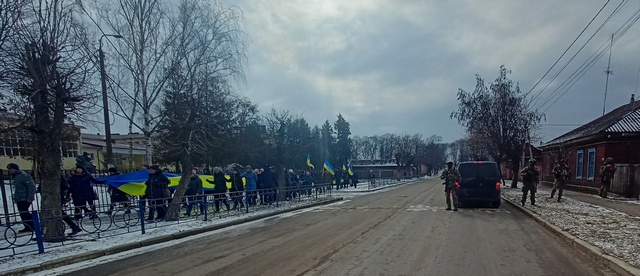 The russians were shooting at the towers that provided mobile communications. But there were a few points outside the city where you could catch the network. Svitlana learned how to charge her gadget in the morning, get information during the day about where bread and medicine would be given, and write about it on Facebook. They also published video messages from the mayor of the town. In this way, they tried to counteract panic among the population, as the occupiers tried to persuade people to cooperate. They mostly bribed people with food, but the residents of the Horodnia community refused to accept it on principle.
After the liberation of the Chernihiv region in early April 2022, Novyny Horodnianshchyny began to think about the possibility of publishing the newspaper again.
“Before the war, all our income came from subscriptions and advertising. It is clear that during the three months of downtime we lost all our income and did not receive a single penny,” says Svitlana Vasylivna. “When the Chernihiv printing house resumed operations, the prices of paper and printing immediately skyrocketed. It became clear that there was no financial opportunity to publish a separate newspaper.”
In difficult conditions, when ordinary life in the Chernihiv region, destroyed by the occupiers, has just begun to recover, three former district newspapers (the Koryukiv-based Mayak, the Mena-based Nashe Slovo, and the Horodnia-based Novyny Horodnianshchyny) decided to join forces to resume publishing.
“We published in this mode in May and August. It was a 12-page newspaper, first in black and white, and then in color,” says Svitlana Tomash. “During the time that the Novyny Horodnianshchyny team was on unpaid leave, and I was actually the only one working as a journalist, we saved some money, and since September 1, 2022, we have been publishing a separate edition every Thursday, as we did before.”
Svitlana Vasylivna says that she feels, “People need Novyny Horodnianshchyny. In some border villages, where the shelling does not stop, there is no electricity or mobile communication. Newspapers are the only possible source of information there, and the local newspaper is the only source of local information.”
The russians were shooting at the towers that provided mobile communications. But there were a few points outside the city where you could catch the network. Svitlana learned how to charge her gadget in the morning, get information during the day about where bread and medicine would be given, and write about it on Facebook. They also published video messages from the mayor of the town. In this way, they tried to counteract panic among the population, as the occupiers tried to persuade people to cooperate. They mostly bribed people with food, but the residents of the Horodnia community refused to accept it on principle.
After the liberation of the Chernihiv region in early April 2022, Novyny Horodnianshchyny began to think about the possibility of publishing the newspaper again.
“Before the war, all our income came from subscriptions and advertising. It is clear that during the three months of downtime we lost all our income and did not receive a single penny,” says Svitlana Vasylivna. “When the Chernihiv printing house resumed operations, the prices of paper and printing immediately skyrocketed. It became clear that there was no financial opportunity to publish a separate newspaper.”
In difficult conditions, when ordinary life in the Chernihiv region, destroyed by the occupiers, has just begun to recover, three former district newspapers (the Koryukiv-based Mayak, the Mena-based Nashe Slovo, and the Horodnia-based Novyny Horodnianshchyny) decided to join forces to resume publishing.
“We published in this mode in May and August. It was a 12-page newspaper, first in black and white, and then in color,” says Svitlana Tomash. “During the time that the Novyny Horodnianshchyny team was on unpaid leave, and I was actually the only one working as a journalist, we saved some money, and since September 1, 2022, we have been publishing a separate edition every Thursday, as we did before.”
Svitlana Vasylivna says that she feels, “People need Novyny Horodnianshchyny. In some border villages, where the shelling does not stop, there is no electricity or mobile communication. Newspapers are the only possible source of information there, and the local newspaper is the only source of local information.”
 “We are happy that our 106-year-old newspaper is trusted,” says the editor. “Despite the fact that people are leaving, the circulation is gradually growing, and we are reaching the pre-war circulation. Advertising is gradually returning. Therefore, we have money for printing and paper. We don’t always have enough to pay salaries, but thanks to various grants, we somehow manage. To tell you the truth, after the de-occupation, I didn’t even expect that we could get back on our feet. Fortunately, the post office works everywhere, even in dangerous settlements. Bread is also brought to people, and they are very reluctant to move out because it’s not easy to leave their homes…”
According to Svitlana, attracting grant assistance opens up great opportunities.
“We participate in various competitions, and thanks to this we receive financial support,” says the editor. “However, large financial donors are still in no hurry to deal with us, because as a border area we are still considered an area where military operations are taking place and where there is a risk of a second invasion. Therefore, without the assistance of the National Union of Journalists, it would be very difficult. In the fall, we received help from the NUJU for printing and paying salaries. And in the spring, the Union, in partnership with the Polish Gazeta Wyborcza, allocated funds to pay salaries. The Academy of Ukrainian Press provided us with a laptop, smartphone and flash card reader. IMI provided a bulletproof vest, a helmet and six power banks.”
Svitlana Tomash says that during the occupation, her only working journalistic tool was a smartphone…, which broke down shortly after the occupation. Therefore, the new equipment came in handy.
“When the orcs came to Horodnia, we were forced to evacuate our computers, and they were left in an unheated garage for a long time. Since then they have been, as they say, ‘barely breathing’. The laptop we received is a great help and a guarantee of the stability of the newsroom,” says Svitlana Tomash. “Given the financial situation of our newspapers now, when we barely have enough money for printing and paper, we can say with certainty that we cannot afford to buy new equipment. This was our biggest need, and we are grateful to everyone who has helped us. It is very inspiring. The despair we had at first has been replaced by hope. Now we are gradually getting back on our feet. I hope everything will be fine!”
“We are happy that our 106-year-old newspaper is trusted,” says the editor. “Despite the fact that people are leaving, the circulation is gradually growing, and we are reaching the pre-war circulation. Advertising is gradually returning. Therefore, we have money for printing and paper. We don’t always have enough to pay salaries, but thanks to various grants, we somehow manage. To tell you the truth, after the de-occupation, I didn’t even expect that we could get back on our feet. Fortunately, the post office works everywhere, even in dangerous settlements. Bread is also brought to people, and they are very reluctant to move out because it’s not easy to leave their homes…”
According to Svitlana, attracting grant assistance opens up great opportunities.
“We participate in various competitions, and thanks to this we receive financial support,” says the editor. “However, large financial donors are still in no hurry to deal with us, because as a border area we are still considered an area where military operations are taking place and where there is a risk of a second invasion. Therefore, without the assistance of the National Union of Journalists, it would be very difficult. In the fall, we received help from the NUJU for printing and paying salaries. And in the spring, the Union, in partnership with the Polish Gazeta Wyborcza, allocated funds to pay salaries. The Academy of Ukrainian Press provided us with a laptop, smartphone and flash card reader. IMI provided a bulletproof vest, a helmet and six power banks.”
Svitlana Tomash says that during the occupation, her only working journalistic tool was a smartphone…, which broke down shortly after the occupation. Therefore, the new equipment came in handy.
“When the orcs came to Horodnia, we were forced to evacuate our computers, and they were left in an unheated garage for a long time. Since then they have been, as they say, ‘barely breathing’. The laptop we received is a great help and a guarantee of the stability of the newsroom,” says Svitlana Tomash. “Given the financial situation of our newspapers now, when we barely have enough money for printing and paper, we can say with certainty that we cannot afford to buy new equipment. This was our biggest need, and we are grateful to everyone who has helped us. It is very inspiring. The despair we had at first has been replaced by hope. Now we are gradually getting back on our feet. I hope everything will be fine!”
 ********************************************************************
This story about the media was created by the NUJU in the frame of the project «Improving Ukrainian Media Resilience in Ukraine», financed by Swiss Solidarity and implemented with the support of the Swiss non-profit organization Fondation Hirondelle and the Institute for Regional Media and Information (IRMI, Ukraine). Fondation Hirondelle and IRMI implement a project of institutional support for Ukrainian media editorial offices in the east, north, and south of our country, with an emphasis on the local press. They also launched a 10-month support program for 18 media.
********************************************************************
This story about the media was created by the NUJU in the frame of the project «Improving Ukrainian Media Resilience in Ukraine», financed by Swiss Solidarity and implemented with the support of the Swiss non-profit organization Fondation Hirondelle and the Institute for Regional Media and Information (IRMI, Ukraine). Fondation Hirondelle and IRMI implement a project of institutional support for Ukrainian media editorial offices in the east, north, and south of our country, with an emphasis on the local press. They also launched a 10-month support program for 18 media.
Economic reference
Novyny Horodnianshchyny weekly newspaper
Distribution area: Chernihiv district Director, editor-in-chief: Svitlana Tomash- The last pre-war issue of the newspaper was dated February 24, 2022, but readers received it in April 2022, after the de-occupation. The newspaper was not published for several months. The newspaper resumed publication on May 12, 2022: the editorial offices of three neighboring districts, including Novyny Horodnianshchyny, had to join forces and publish one joint newspaper with 12 pages. However, in September 2022, the editorial office returned to publishing a separate edition and to the usual format of 8 pages, which it had until February 24, 2022.
- The average circulation of one issue in March 2023 was 2,765 copies.
- As before the war, subscriptions remain the main distribution channel for the newspaper, as well as the main source of revenue (82%), with 94% of circulation. The rest of the circulation goes to retail.
- The newspaper employs five people: an editor, an accountant, a layout designer, and two creative workers. Due to the difficult financial situation, the editorial office was unable to maintain a car, buy fuel, and pay the driver’s salary. The layout designer and one creative worker were transferred to 0.5 of their official salary.
- The premises of the former district council, where the editorial office rented three offices until February 24, 2022, survived. However, after the de-occupation, two offices were abandoned due to the inability to pay for utilities. Now, some of the editorial staff works from home.
- During the war, the media received personal protective equipment, technical and financial assistance: in the fall, the NUJU provided assistance for printing and salaries, and in the spring, the Union, in partnership with the Polish newspaper Gazeta Wyborcza, allocated funds for salaries; the Academy of Ukrainian Press provided a laptop, smartphone and flash card reader; IMI provided body armor, a helmet and six power banks. However, the media outlet needs computer equipment for newspaper layout.
- The region of the publication’s distribution is unique, as it borders on two aggressor countries (russia and belarus), which have had a great influence on the information space and the formation of the population’s worldview through television. Novyny Horodnianshchyny is the only local print publication in the community. And it works to form a pro-Ukrainian position among the residents of the region by telling people stories from the lives of local defenders, military personnel, volunteers, activists, and public figures.
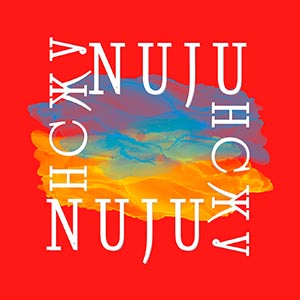
 THE NATIONAL UNION OF
JOURNALISTS OF UKRAINE
THE NATIONAL UNION OF
JOURNALISTS OF UKRAINE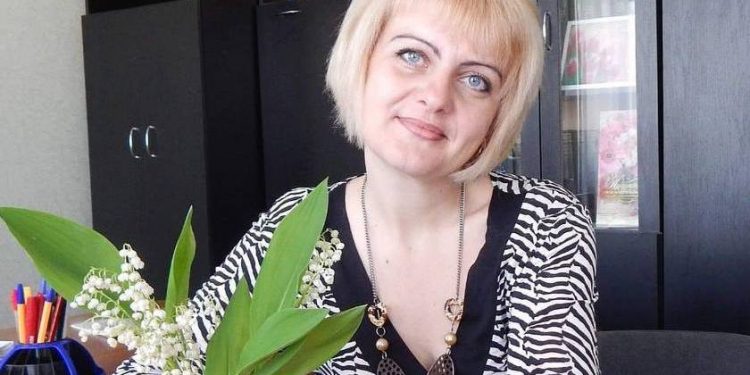

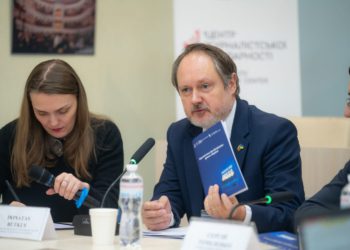
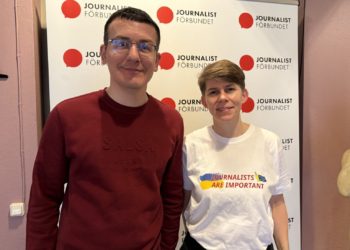
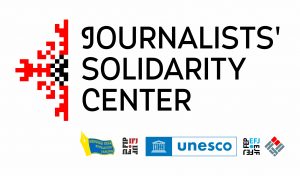
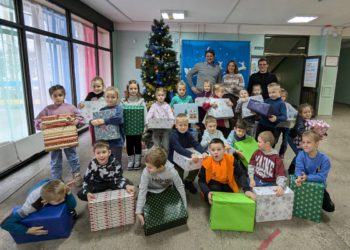







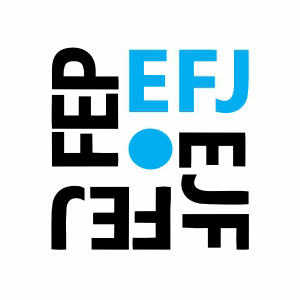



Discussion about this post